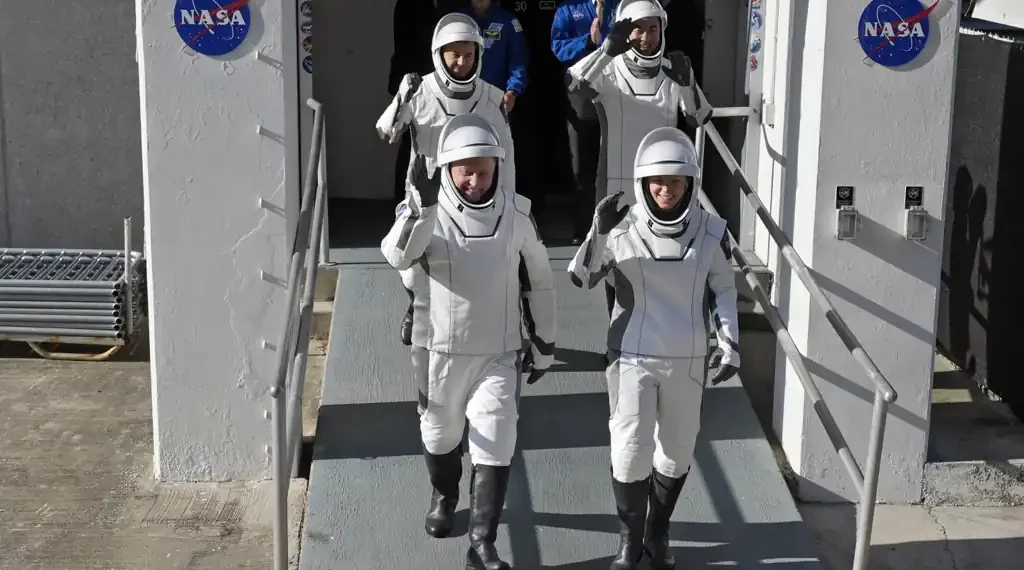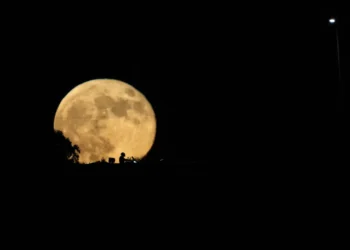Weather Delays NASA-SpaceX Astronaut Launch to the International Space Station
Written: July-31-2025, 18:30 EDT
Thick cloud cover over Florida’s Kennedy Space Center led to a last-minute delay of NASA and SpaceX’s joint launch to the International Space Station (ISS) on Thursday. The launch was aborted just over a minute before liftoff, underscoring how quickly weather conditions can impact space missions.
This mission, part of NASA’s regular crew rotation to the ISS, includes astronauts from the United States, Japan, and Russia, all of whom will remain on the space station for at least six months.
Countdown halted moments before liftoff
The launch was called off at T-minus 1 minute and 7 seconds, a critical point in the countdown sequence. SpaceX cited unfavorable cloud conditions as the primary reason for the delay, despite clear skies earlier in the day.
Transportation Secretary Sean Duffy, who is currently serving as NASA’s acting administrator, was present at Kennedy Space Center to witness the launch attempt. “The morning began with calm weather, but winds increased and dense cloud cover quickly rolled in,” Duffy said.
This type of delay is not uncommon in spaceflight. NASA and SpaceX follow strict weather criteria to ensure crew safety, including limits on wind speed, lightning threats, and cloud thickness.
Launch rescheduled, but weather remains uncertain
SpaceX has announced a backup launch window for Friday, although weather forecasts suggest even less favorable conditions. Meteorologists have reported increased cloud density, stronger wind gusts, and a higher chance of lightning over the launch area in Cape Canaveral.
If Friday’s launch is scrubbed, the mission may be pushed to the weekend or early next week, depending on weather patterns and orbital alignment with the ISS.
NASA and SpaceX have emphasized that delays due to weather are routine and part of ensuring crew safety. “We never launch unless conditions are right,” said a NASA spokesperson.
Mission details and crew composition
This flight, officially designated Crew-10 under NASA’s Commercial Crew Program, will carry four astronauts to the ISS:
- Dr. Alex Porter (NASA) – Mission commander
- Lt. Kaito Nakamura (JAXA) – Japanese Aerospace Exploration Agency
- Col. Elena Sokolova (Roscosmos) – Russian space agency
- Dr. Marissa Lin (NASA) – Mission specialist
These astronauts are scheduled to replace the current Expedition 71 crew, who launched in March as interim replacements after NASA’s two astronauts were grounded due to technical issues with their capsule.
Once aboard the ISS, the Crew-10 team will conduct scientific research, perform maintenance, and continue experiments related to Earth observation, space medicine, and microgravity physics.
Importance of NASA-SpaceX partnerships
The collaboration between NASA and SpaceX under the Commercial Crew Program has enabled routine human spaceflight from U.S. soil. Since the program’s first crewed flight in 2020, SpaceX’s Crew Dragon spacecraft has ferried multiple international astronauts to the orbiting lab.
SpaceX, led by Elon Musk, operates the reusable Falcon 9 rocket system, which has been praised for its reliability and cost efficiency. Each launch helps advance U.S. goals for deep-space missions, including planned crewed missions to the Moon and, eventually, Mars.
Despite occasional weather-related delays, SpaceX’s track record for safe, on-time crew transport has earned the company high marks from NASA.
Weather: The critical variable in launch planning
Weather remains one of the most unpredictable and uncontrollable variables in spaceflight. Even when hardware and crew are fully prepared, environmental conditions can change rapidly, forcing last-minute decisions.
Meteorologists at the 45th Weather Squadron, which provides forecasting for Kennedy Space Center, monitor parameters such as:
- Cloud thickness and type
- Wind shear and surface gusts
- Cumulus cloud rule violations
- Lightning risk during ascent
According to NASA’s launch weather criteria, thick or low-lying clouds can lead to potential “triggering” of lightning, especially during rocket ascent through electrically charged air.
Thursday’s conditions met those thresholds, prompting SpaceX’s decision to abort.
Looking ahead
While disappointing for the astronauts and the agencies involved, the delay is seen as a precautionary success of the protocols in place. A successful launch depends not just on rocket science, but on respecting nature’s forces.
If weather permits, Friday’s launch attempt will follow the same timeline and procedures. Should another delay occur, NASA will provide updates via its official channels and livestream any future attempts on NASA TV and SpaceX platforms.
For the astronauts, a day’s delay may mean extra time in quarantine and final mission reviews, but safety remains paramount.
This article was rewritten by JournosNews.com based on verified reporting from trusted sources. The content has been independently reviewed, fact-checked, and edited for accuracy, neutrality, tone, and global readability in accordance with Google News and AdSense standards.
All opinions, quotes, or statements from contributors, experts, or sourced organizations do not necessarily reflect the views of JournosNews.com. JournosNews.com maintains full editorial independence from any external funders, sponsors, or organizations.
Stay informed with JournosNews.com — your trusted source for verified global reporting and in-depth analysis. Follow us on Google News, BlueSky, and X for real-time updates.














